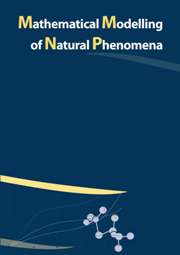Article contents
Spread Pattern Formation of H5N1-Avian Influenzaand its Implications for Control Strategies
Published online by Cambridge University Press: 23 October 2008
Abstract
Mechanisms contributing to the spread of avian influenza seem to be well identified, buthow their interplay led to the current worldwide spread pattern of H5N1 influenza is still unknowndue to the lack of effective global surveillance and relevant data. Here we develop some deterministicmodels based on the transmission cycle and modes of H5N1 and focusing on the interactionamong poultry, wild birds and environment. Some of the model parameters are obtained fromexisting literatures, and others are allowed to vary in order to assess the effectiveness of variouscontrol strategies involving bird migration, agro-ecological environments, live and dead poultrytrading, smuggling of wild birds, mechanical movement of infected materials and specific farmingpractices. Our simulations are carried out for a set of parameters that leads to the basic reproductionnumber 3.3. We show that by reducing 95% of the initial susceptible poultry population or bykilling all infected poultry birds within one day, one may control the disease outbreak in a localsetting. Our simulation shows that cleaning the environment is also a feasible and useful controlmeasure, but culling wild birds and destroying their habitat are ineffective control measures. Weuse a one dimensional PDE model to examine the contribution to the spatial spread rate by thesize of the susceptible poultry birds, the diffusion rates of the wild birds and the virus. We noticethe diffusion rate of the wild birds with high mortality has very little impact on the spread speed.But for the wild birds who can survive the infection, depending on the direction of convection,their diffusion rate can substantially increase the spread rate, indicating a significant role of themigration of these type of wild birds in the spread of the disease.
- Type
- Research Article
- Information
- Mathematical Modelling of Natural Phenomena , Volume 3 , Issue 7: Special issue dedicated to Glenn Webb , 2008 , pp. 161 - 179
- Copyright
- © EDP Sciences, 2008
- 20
- Cited by


